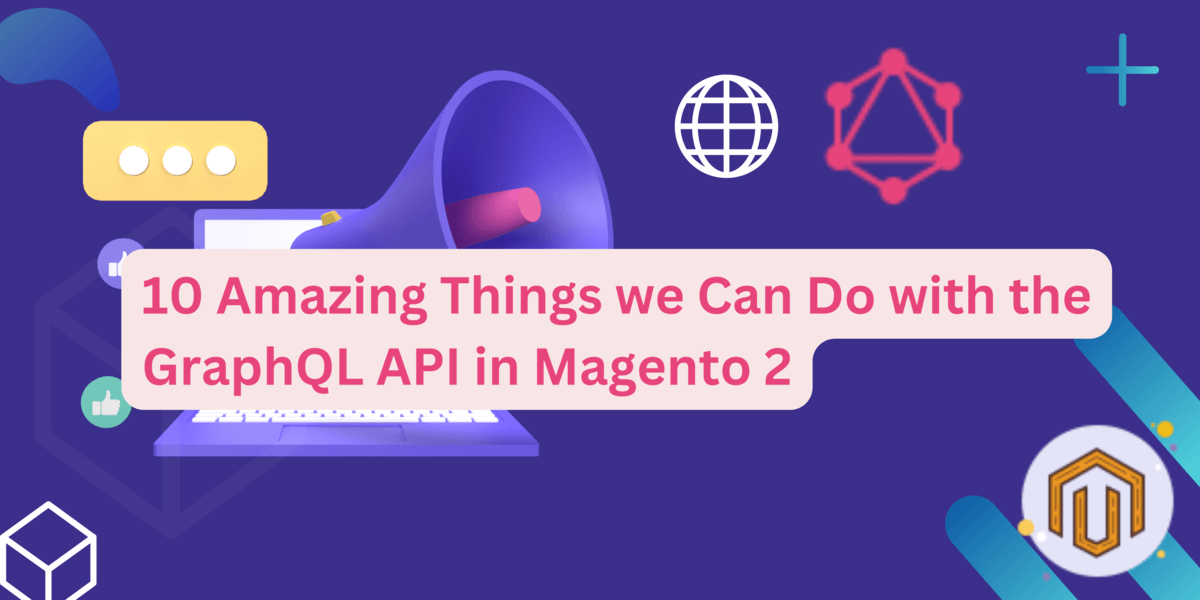
With the increasing popularity of GraphQL as a modern alternative to RESTful APIs, it has become an integral part of many web development frameworks. Magento, one of the leading e-commerce platforms, introduced GraphQL support in its version 2.3.0. Since then, developers have been leveraging the power of GraphQL to build efficient and flexible e-commerce applications. In this blog post, we will explore 10 amazing things we can do with the GraphQL API in Magento 2.
Magento 2 is a popular e-commerce platform that offers a GraphQL API, allowing developers to perform various tasks efficiently and effectively. Here are ten amazing things you can do with the GraphQL API in Magento 2:
- Flexible Data Retrieval: GraphQL allows you to request specific data fields, giving you the flexibility to retrieve only the necessary information. This reduces over-fetching and enhances performance.
- Efficient Data Updates: With GraphQL mutations, you can efficiently update data on the server using a single request. This simplifies the process of adding, updating, or deleting entities within the Magento 2 system.
- Customized Queries: Developers can create custom queries tailored to their application's specific needs, enabling them to retrieve related data in a single request, reducing the number of API calls.
- Real-time Data: GraphQL supports real-time data subscriptions, enabling applications to receive live updates whenever there are changes in the data, making it ideal for implementing features like real-time notifications or chat systems.
- Mobile App Development: With GraphQL, you can optimize the data sent to mobile apps, reducing bandwidth usage and improving app performance, making it an excellent choice for developing mobile e-commerce applications.
- PWA (Progressive Web App) Integration: Magento 2 with GraphQL makes it easier to build Progressive Web Apps that deliver a seamless and responsive user experience across different devices and browsers.
- Personalization: You can leverage GraphQL's flexibility to tailor data queries for personalized user experiences, such as personalized product recommendations based on user behavior and preferences.
- Frontend Framework Integration: Developers can use modern frontend frameworks like React, Vue.js, or Angular with GraphQL to build feature-rich and interactive e-commerce websites.
- Third-party Integration: GraphQL simplifies the process of integrating with third-party services and APIs, making it easier to expand the capabilities of your Magento 2 store.
- Performance Optimization: By eliminating the problem of over-fetching data, GraphQL helps in optimizing API performance, leading to faster response times and improved scalability.
In summary, Magento 2's GraphQL API offers developers a powerful toolset to build efficient, flexible, and high-performing e-commerce applications that can cater to the needs of modern online shoppers and business owners.
The introduction of GraphQL in Magento 2 has brought a range of benefits for developers building e-commerce applications. With its efficient data fetching, customizable queries, real-time updates, and extensibility, the GraphQL API in Magento 2 provides a powerful toolset for creating flexible, high-performing, and user-friendly applications. By harnessing the capabilities of the GraphQL API, developers can unlock new possibilities and elevate the e-commerce experience for both merchants and customers.



